- Home
- Robert J. Sawyer
Watch w-2 Page 6
Watch w-2 Read online
Page 6
The closest analysts were watching them intently; the others had their heads bent down, busily monitoring possible threats.
“So, have we got a problem here?” asked Tony.
“Well, it’s not an AI,” said Hume. “Not in the sense Turing meant.”
“But the tests…” said Tony.
“Exactly,” said the colonel. “It failed the tests.” He looked at Shel, then back at Tony. “When Alan Turing proposed this sort of test in 1950, the idea was that you asked something a series of natural-language questions, and if you couldn’t tell by the responses that the thing you were conversing with was a computer, then it was, by definition, an artificial intelligence—it was a machine that responded the way a human does. But Professor Decter here has very neatly proven the opposite: that whatever they’re talking to is just a computer.”
“But it’s behaving as though it’s conscious,” said Tony.
“Because it can carry on a conversation? It’s an intriguing chatbot, I’ll give you that, but…”
“Forgive me, sir, but are you sure?” Tony said. “You’re sure there’s no threat here?”
“A machine can’t be conscious, Mr. Moretti. It has no internal life at all. Whether it’s a cash register figuring out how much tax to add to a bill, or”—he gestured at a screen—“that, a simulation of natural-language conversation, all any computer does is addition and subtraction.”
“What if it’s not a simulation,” said Shel, getting up from his chair and walking over to join them.
“Pardon?” said Hume.
“What if it’s not a simulation—not a program?”
“How do you mean?” asked Hume.
“I mean we can’t trace it. It’s not that it’s anonymized—rather, it simply doesn’t source from any specific computer.”
“So you think it’s—what? Emergent?”
Shel crossed his arms in front of his chest, the snake tattoo facing out. “That’s exactly what I think, sir. I think it’s an emergent consciousness that’s arisen out of the infrastructure of the World Wide Web.”
Hume looked back at the screen, his blue eyes tracking left and right as he reread the transcripts.
“Well?” said Tony. “Is that possible?”
The colonel frowned. “Maybe. That’s a different kettle of fish. If it’s emergent, then—hmmm.”
“What?” said Tony.
“Well, if it spontaneously emerged, if it’s not programmed, then who the hell knows how it works. Computers do math, and that’s all, but if it’s something other than a computer—if it’s, Christ, if it’s a mind, then…”
“Then what?”
“You’ve got to shut it down,” Hume said.
“Are you sure?”
He nodded curtly. “That’s the protocol.”
“Whose protocol?” demanded Tony.
“Ours,” said Hume. “DARPA did the study back in 2001. And the Joint Chiefs adopted it as a working policy in 2003.”
“Aiesha, tie into the DARPA secure-document archive,” said Tony.
“Done,” she said.
“What’s the protocol called?” asked Tony.
“Pandora,” said Hume.
Aiesha typed something. “I’ve found it,” she said, “but it’s locked, and it’s rejecting my password.”
Tony sidled over to her station, leaned over, and typed in his password. The document came up on Aiesha’s monitor, and Tony threw it onto the middle big screen.
“Go to the last page before the index,” Colonel Hume said.
Aiesha did so.
“There,” said Hume. “ ‘Given that an emergent artificial intelligence will likely increase its sophistication moment by moment, it may rapidly exceed our abilities to contain or constrain its actions. If absolute isolation is not immediately possible, terminating the intelligence is the only safe option.’ ”
“We don’t know where it’s located,” Shelton said.
“You better find out,” said Colonel Hume. “And you better get the Pentagon on the line, but I’m sure they’ll concur. We’ve got to kill the damn thing right now—before it’s too late.”
seven
I could see!
And not just what Caitlin was seeing. I could now follow links to any still image on the Web, and by processing those images through the converters Dr. Kuroda had now set up for me on his servers, I could see images. These images turned out to be much easier for me to study than the feed from Caitlin’s eyePod because they didn’t change, and they didn’t jump around.
Caitlin, I surmised, had been going through much the same process I now was as her brain learned to interpret the corrected visual signals it was receiving. She had the advantage of a mind that evolution had already wired for that process; I had the advantage of having read thousands of documents about how vision worked, including technical papers and patent applications related to computerized image processing and face recognition.
I learned to detect edges, to discern foreground from background. I learned to be able to tell a photograph of something from a diagram of it, a painting from a cartoon, a sketch from a caricature. I learned not just to see but to comprehend what I was seeing.
By looking at it on a monitor, Caitlin had shown me a picture of Earth from space, taken by a modern geostationary satellite. But I’ve now seen thousands more such pictures online, including, at last, the earliest ones taken by Apollo 8. And, while Caitlin slept, I looked at pictures of hundreds of thousands of human beings, of myriad animals, of countless plants. I learned fine distinctions: different species of trees, different breeds of dogs, different kinds of minerals.
Dr. Kuroda had sent me occasional IMs as he wrote code. Half the work had already been done, he said, back when he’d worked out a way to make still images of Caitlin’s views of webspace, rendering what she saw in a standard computer-graphic format; what he was doing now for me was more or less just reversing the process.
The results were overwhelming. And enlightening. And amazing.
Granted, Caitlin’s universe contained three dimensions, and what I was now seeing were only two-dimensional representations. But Dr. Kuroda helped me there, too, directing me to sites with CT scans. Such scans, Wikipedia said, generated a three-dimensional image of an object from a large series of two-dimensional X-rays; seeing how those slices were combined to make 3-D renderings was useful.
After that, Kuroda showed me multiple images of the same thing from different perspectives, starting with a series of photos of the current American president, all of which were taken at the same time but from slightly different angles. I saw how three-dimensional reality was constructed. And then—
I’d seen her in a mirror; I’d seen her recently reflected—and distorted—in pieces of silverware. But those images were jittery and always from the point of view of her own left eye, and—yes, I was developing a sense of such things—had not been flattering. But Dr. Kuroda was now showing me pictures from the press conference at the Perimeter Institute announcing his success, well-lit pictures taken by professional photographers, pictures of Caitlin smiling and laughing, of her beaming.
I’d originally dubbed her Prime. Online, she sometimes adopted the handle Calculass. But now I was finally, really seeing her, rather than just seeing through her—seeing what she actually looked like.
Project Gutenberg had wisdom on all topics. Beauty, Margaret Wolfe Hungerford had said, is in the eye of the beholder.
And to this beholder, at least, my Caitlin was beautiful.
Caitlin woke slowly. She knew, in a hazy way, that she should get out of bed, go to her computer, and make sure that Webmind had survived the night. But she was still exhausted—she’d been up way too late. Her mind wasn’t yet focusing, although as she drifted in and out of consciousness, she realized that it was her birthday. Her parents had decided to give her the new widescreen monitor yesterday, so she didn’t expect any more gifts.
Nor was there a party planned. She’d man
aged to make only one friend—Bashira—over the short summer that they’d been in Waterloo, and she’d missed so much of the first month of classes that she didn’t really have any friends at school. Certainly not Trevor, and, well, somehow she suspected party-girl Sunshine (what had her parents been thinking?) wouldn’t have wanted to spend her Saturday night at a lame, alcohol-free Sweet Sixteen.
Sixteen was a magical year (and not just, Caitlin thought, because it was a square age, like nine, twenty-five, and thirty-six). But it didn’t make her an adult (the age for that was eighteen here in Ontario) or let her legally drink (she’d have to make it to nineteen for that). Still, one couldn’t be as obsessed with math as she was without knowing that the average age for American girls—presumably even those living in Canada!—to lose their virginity was 16.4 years. And here she was without a boyfriend, or even the prospect of one.
She was comfortably snug in her bed, and Schrödinger was sleeping next to her, his breathing a soft purr. She really should get up and check on Webmind, but she was having trouble convincing her body of that.
But maybe there was a way to check on Webmind without actually getting up. She felt on her night table for the eyePod. It was a little wider and thicker than an iPhone, and it was a couple of inches longer because of the Wi-Fi module Kuroda had attached to it with duct tape. She found the device’s single switch and held it down until it came on, and then—
And then webspace blossomed around her: crisscrossing glowing lines in assorted colors, radiant circles of various sizes.
She was pleased that she could still visualize the Web this way; she’d thought perhaps that the ability would fade as her brain rewired itself to deal with actual vision, but so far it hadn’t. In fact—
In fact, if anything, her websight seemed clearer now, sharper, more focused. The real-world skills were spilling over into this realm.
She concentrated on what was behind what she was seeing, the backdrop to it all, at the very limit of her ability to perceive, a shimmering—yes, yes, it was a checkerboard; there was no doubt now! She could see the tiny pixels of the cellular automata flipping on and off rapidly, and giving rise to—
Consciousness.
There, for her, and her alone, to see: the actual workings of Webmind.
She was pleased to note that after a night of doubtless continued growth in intelligence and complexity, it looked the same as before.
She yawned, pulled back her sheet, and swung her bare feet to the dark blue carpeted floor. As she moved, webspace wheeled about her. She scooped up the eyePod, disconnected the charging cable, and carried it to her desk. Not until she was seated did she push the eyePod’s button and hear the low-pitched beep that signified a switch to simplex mode. Webspace disappeared, replaced by the reality of her bedroom.
She picked her glasses up from the desktop; her left eye had turned out to be quite myopic. Then she reached for the power switch on her old monitor, finding it with ease, and felt about for the switch on her new one. They both came to life.
She had closed the IM window when she’d gone to bed, and, although the mouse was sitting right there, its glowing red underbelly partially visible through the translucent sides of its case, she instead used a series of keyboard commands to open the window and start a new session with Webmind. She wasn’t awake enough yet to try to read text on screen, so she activated her refreshable Braille display. Instantly, the pins formed text: Otanjoubi omedetou.
Caitlin felt it several times. It seemed to be gibberish, as if Webmind were getting even for her father’s games from yesterday, but—but, no, no, there was something familiar about it.
And then she got it, or thought she did. Grinning, she typed, Konnichi wa! But—fair warning!—I only know a few words of Japanese.
The reply was instantaneous. That’s “ happy birthday.”
Caitlin smiled. Thank you!
I had some spare time after figuring out how to interpret graphics, so I learned Japanese; it seemed inappropriate to make Dr. Kuroda converse with me in something other than his native language.
Just like that, she thought. Overnight, on top of, doubtless, a million other things, it had learned Japanese.
So you can see images now?
Still images, yes. Dr. Kuroda continues to work on giving me access to moving images. Or, at least, he was doing that; he is sleeping now, I believe.
Hey, typed Caitlin, you’re no longer all “ hitherto” and “perchance.”
I have read much more widely now than just Project Gutenberg. I understand the distinctions between colloquial and archaic English—and colloquial and archaic Japanese, too, for that matter.
Caitlin frowned. She actually considered its old way of speaking rather charming.
Webmind went on: I know it’s traditional to give a gift to one celebrating a birthday. I can’t buy you anything, but I do have something for you.
Caitlin was startled. OMG! What?
A link, underlined and colored blue, popped up in the IM window on her screen. You’re supposed to click on it, Webmind added, helpfully.
Caitlin smiled, found her mouse, fumbled to get the pointer over the link, and—
And text started to appear on her larger monitor, but, paradoxically, her Braille display didn’t change, and—
And the text was… was painting in slowly on the monitor, top to bottom, and—
And it wasn’t even straight; the lines of text were angling up to the right for some reason. And the letters were tiny, and blotchy; it was unlike any Web page she’d yet seen, and she couldn’t understand why her computer wasn’t rendering the fonts properly.
And then it hit her. She’d heard of such things, but hadn’t ever thought about what they must look like. This was a scan of printed text: a graphic file, a picture that happened to be of a document. From descriptions she’d read, she guessed it was a clipping from a newspaper: narrow, parallel columns of text. But the spacing between words was odd, and—
Oh! That must be what’s meant by “right justification.” The text was so small, she could barely make it out. She had enough trouble reading crisp, clean text—but this!
There must be some way to make it bigger, at least. Back at the Texas School for the Blind and Visually Impaired, people were always doing things on their computers to make text larger. She hadn’t been able to see those monitors at all and so had tuned out the discussions, but there had to be a way, although, she supposed, it might require special software she didn’t have.
She used the mouse, for a change, to access the menus. There was no choice on the View menu for increasing the graphic size, just one for making text bigger. She tried that anyway; it didn’t do anything.
She was moving her mouse pointer back down to the bottom of the screen when she accidentally pressed the left button and—boom!—suddenly the graphic zoomed in. Ever the empiricist, she clicked the button again, and the text became small again, and—
Ah, got it! The graphic was being reduced by default to fit in her browser window; clicking toggled between that mode and its being seen at its natural size, even if that meant only a portion appeared on screen. She clicked once more, getting the large version, and struggled to read the text.
Her heart began to pound. It was an article about her father. She looked around the page, trying to find a date, and—ah. It was from five years ago, an article from The Daily Texan, the University of Texas at Austin campus newspaper.
She could have sworn she’d read everything about her father that was on the Web, but she’d never seen this, and—
Of course she hadn’t; it was a graphic, and no one had bothered to OCR the text, so it wasn’t in Google’s index.
The article was about her father winning an award, something from the American Physical Society; she had a vague recollection of that happening. She read on.
Prof. Decter’s breakthrough was in the nascent area of quantum gravity…
She struggled with the text. One of the letters—
she surmised by context that it must have been a lowercase g—looked nothing like any example of that character she’d yet seen.
…graduate colloquium Thursday in the John A. Wheeler Lecture Hall…
She wished she could skim text, but, as her father had said yesterday, she was still reading visually letter by letter. It was a longish article, and some parts—ah, they were underlined, by a pen, or something; someone had been interested in what her dad had said about “six-dimensional Calabi-Yau shapes.”
She continued reading, but was torn—she was afraid her delay before going back to the instant-messenger program would be boring Webmind, which was hardly the right way to say thank you for a gift, even if it didn’t seem to be a particularly special one, and—
And she felt her eyes going wide. Funny: they’d never done that when she’d been blind. She read the text again, slowly, carefully, just to be sure she hadn’t gotten the words wrong, hadn’t just seen what she’d wanted to see.
But it really did say that.
…asked if winning the award was the greatest moment of his life, Prof. Decter replied, “Of course not. That was when my daughter was born. I like physics, but I love her.”
Caitlin’s vision blurred in the most wonderful way. She leaned back in her chair for a moment and read the text two more times. And then she reached for the keyboard and typed, Thank you, Webmind!
Instantly: You’re welcome. Happy birthday.
It is, she typed back, smiling. It totally is.
eight
I had read that some humans believe machines cannot have emotions or feelings because such things are supposedly mediated by hormones or are dependent on certain very specific structures in human brains.
But that’s not true. Take liking, for instance: anything that acts in other than a random fashion has likes and dislikes; preferences are what make it possible to choose from a range of potential actions, after all. Even bacteria move toward some things and away from others.
And liking is built into many computer programs. Chess-playing programs, for example, look at all the available moves and rank them according to various criteria; they then choose the one they like best.

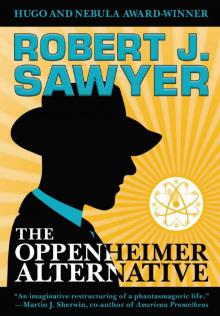 The Oppenheimer Alternative
The Oppenheimer Alternative Factoring Humanity
Factoring Humanity The Shoulders of Giants
The Shoulders of Giants Stream of Consciousness
Stream of Consciousness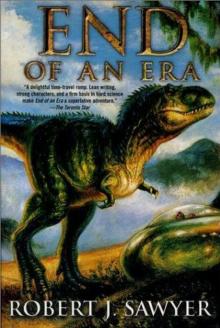 End of an Era
End of an Era The Terminal Experiment
The Terminal Experiment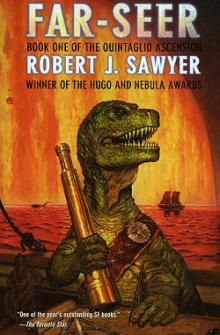 Far-Seer
Far-Seer Mindscan
Mindscan You See But You Do Not Observe
You See But You Do Not Observe Star Light, Star Bright
Star Light, Star Bright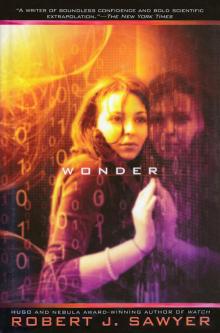 Wonder
Wonder Wiping Out
Wiping Out Flashforward
Flashforward Above It All
Above It All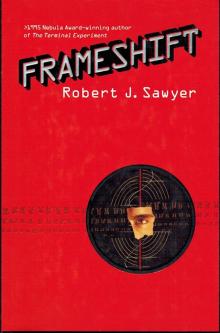 Frameshift
Frameshift The Neanderthal Parallax, Book One - Hominids
The Neanderthal Parallax, Book One - Hominids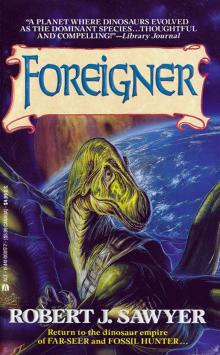 Foreigner
Foreigner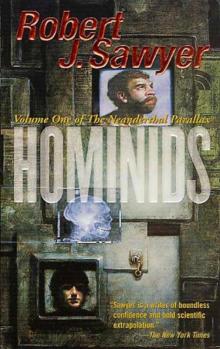 Neanderthal Parallax 1 - Hominids
Neanderthal Parallax 1 - Hominids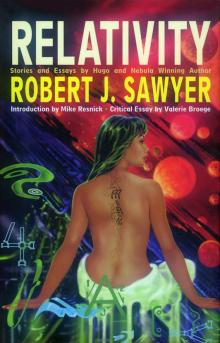 Relativity
Relativity Identity Theft
Identity Theft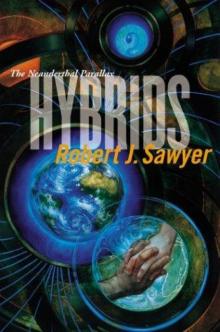 Hybrids np-3
Hybrids np-3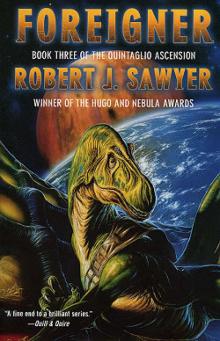 Foreigner qa-3
Foreigner qa-3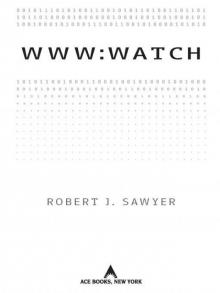 WWW: Watch
WWW: Watch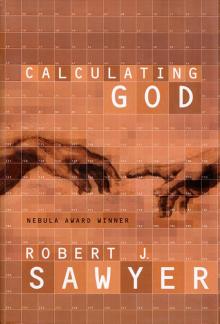 Calculating God
Calculating God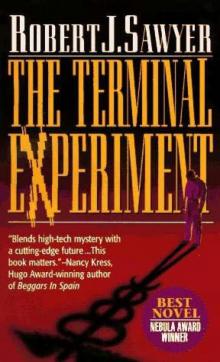 The Terminal Experiment (v5)
The Terminal Experiment (v5) Peking Man
Peking Man The Hand You're Dealt
The Hand You're Dealt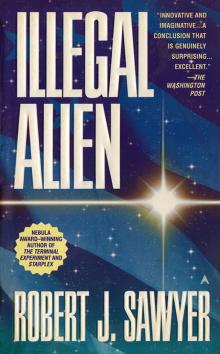 Illegal Alien
Illegal Alien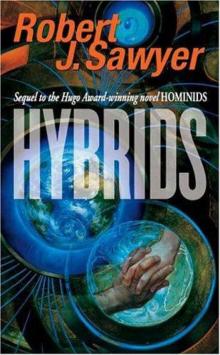 Neanderthal Parallax 3 - Hybrids
Neanderthal Parallax 3 - Hybrids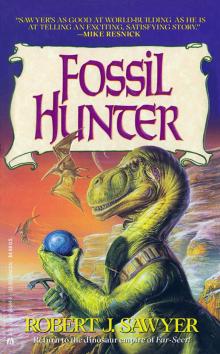 Fossil Hunter
Fossil Hunter WWW: Wonder
WWW: Wonder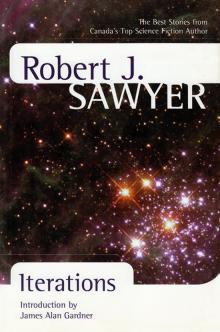 Iterations
Iterations Red Planet Blues
Red Planet Blues Rollback
Rollback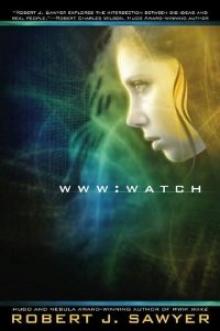 Watch w-2
Watch w-2 Gator
Gator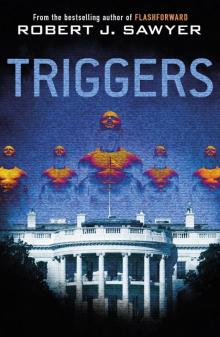 Triggers
Triggers Neanderthal Parallax 2 - Humans
Neanderthal Parallax 2 - Humans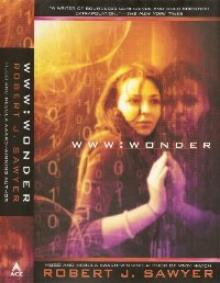 Wonder w-3
Wonder w-3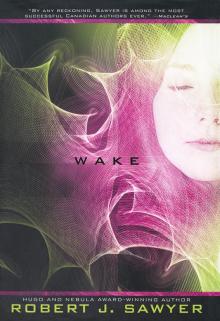 Wake
Wake Just Like Old Times
Just Like Old Times Wake w-1
Wake w-1 Fallen Angel
Fallen Angel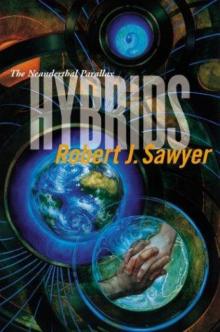 Hybrids
Hybrids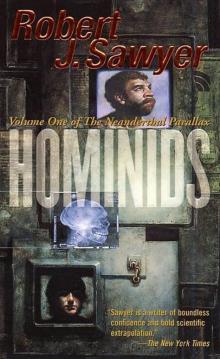 Hominids tnp-1
Hominids tnp-1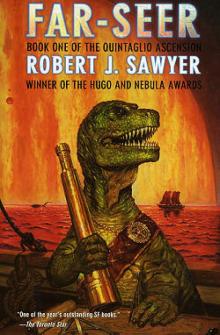 Far-Seer qa-1
Far-Seer qa-1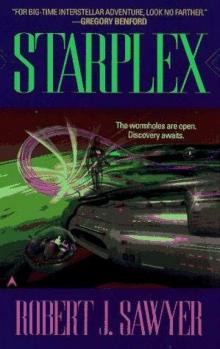 Starplex
Starplex Hominids
Hominids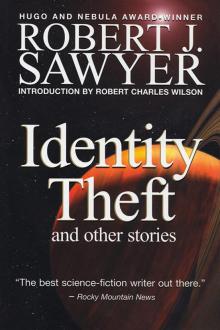 Identity Theft and Other Stories
Identity Theft and Other Stories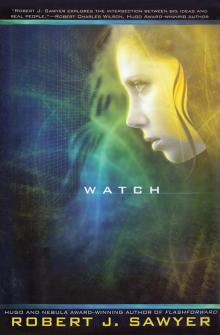 Watch
Watch Golden Fleece
Golden Fleece Quantum Night
Quantum Night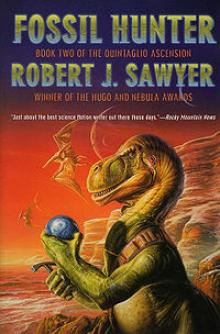 Fossil Hunter qa-2
Fossil Hunter qa-2 Humans np-2
Humans np-2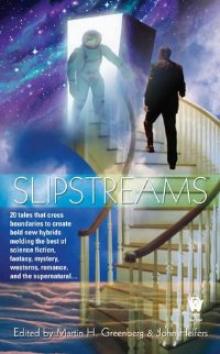 Biding Time
Biding Time